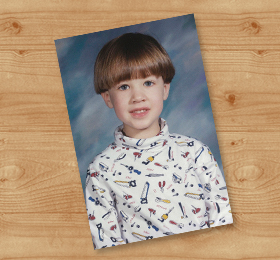On June 14, it will have been 18 years since I last saw the sweet face of my 4-year-old son, Noah. He died from a series of medical errors following a tonsillectomy, four hours after having been discharged from the emergency department (ED). One of the primary causes of
his death was the disconnect between surgery and the ED. Surgery saw him as an ED patient, and the ED saw him as a surgery patient. As it was described to me years later, no one took “ownership” of Noah.
Fast forward to today. Since Noah died, I’ve acquired an M.P.H. and a Ph.D. and have been working in healthcare for many years as a patient safety and patient engagement expert. I finally understand the silos in healthcare that prevented Noah from receiving the care he needed. My work has always been and continues to be shaped by the patient experience.
Silos…we hear about them a lot in healthcare, and sadly, their existence has become an accepted concept. Regularly I see healthcare workers shrug their shoulders when commenting on the fragmented, isolated nature of their workplaces. Those shrugging shoulders reflect a dismissal acceptance that nothing will change.
But what if we looked at healthcare from the patient’s perspective?
Most patients walk into hospitals with no awareness of the differences between departments or the organization’s hierarchical structure. Patients come in sick, scared, and hoping to be helped. They are unaware of the distinctions among quality, patient safety, patient experience, and all the other departments that work to make sure that their stay is safe and satisfactory.
I have worked with many hospitals where the quality and patient safety staff work with completely different reporting structures than the patient experience staff. I have seen the department that takes complaints and grievances report to patient relations, with no connection to quality or safety.
Reflecting on their last hospital visit—either as patients, family members, or friends—very few people would give separate evaluations for different departments. Would they know to acknowledge safety’s role in using double identifiers? Quality for the fact that they didn’t fall? Patient experience for improved communication?
When something unexpected happens, most people would not be able to identify whether or not it was truly a safety event and, further, be able to distinguish the difference between safety, quality, and experience—nor should they!
Patients do not see silos, so why does healthcare need them? Healthcare professionals should think about how the siloed environment may be harming patients and begin to consider patient-centered care as something that begins in the boardroom and the C-suite.
Lets create a healthcare system that is formed around how a patient views healthcare, not the way it has always been. It’s time to think about how many lives would be positively impacted if we stopped dismissively shrugging our shoulders and started truly working in partnership with patients and families to tear the silos down.






1 Comment
I do not know if you will ever read this but I was very moved by Noah’s Story. I am currently in the pediatric curriculum of Nursing school and this is required reading/watching. So very sorry that this unfortunate event happened to Noah and your family. His legacy, however, will carry on in each and every one of us who seek to make a difference in the future of healthcare.